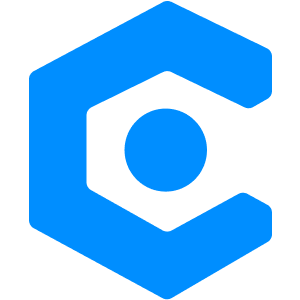According to Henry David Thoreau, the best government is that which governs the least. Thoreau advocates for the exclusion of the government from public affairs. He and others of similar persuasion believe that nations thrive under minimal regulation. To them, such environments stimulate innovation and industry. Thus countries progress, guaranteeing their citizens greater social advancement.
The United Allied States(U.A.S) under the leadership of Stephen McCullah, envisions governance in Thoreau-esque fashion. It has its foundations on market-driven economies that uphold human rights. The government intends to leverage blockchain technology to achieve the former. Blockchain provides an avenue for the government to exit the market and deploy an impregnable, efficient and transparent system to aid in the execution of its mandate.
Enhancing Government Efficiency via Tech
The value of technology in governance cannot be quantified. Innovation allows adoption of better systems and processes geared towards making a government open, accessible, accountable and efficient.
As such, the judicious utilization of tech has the potential to transform governance across the globe. The U.A.S contemplates a more responsive government through digitization in the following ways:
One-Stop Service Shops(Convergence of Govt Departments)
Using blockchain infrastructure, the government intends to host all of its departments on a single platform. These develop linkages within themselves, allowing for timely information sharing. Therefore, any person or entity seeking services has a one-stop desk to go to for their access.
Additionally, the one-stop government service model, coupled with the automation of payments assists entrepreneurs to set up their ventures expeditiously. In this way, the government incentivizes investments.
Civil Registration
Blockchain enables digital capture of vital information such as births, deaths and civil unions. The government then uses this information for planning purposes. Moreover, the repository streamlines the issuance of important documents like birth and death certificates, identification documents and marriage certificates.
Secure Payments Method
Cryptocurrencies are the medium of exchange in the U.A.S's economy. When used together with smart contracts, they mitigate fraud associated with other payment methods like credit cards or wire transfers and fiat currencies.
Land Registration
Fintech allows for real-time documentation of transactions on land and property. The permanent public record of these provides proof of legitimate ownership hence preventing fraudulent acquisitions.
Open Government
Distributed Ledger Technologies opens government functions and processes to the public. The public tracks every transaction as it leaves an indelible time stamp on the platform. In essence, key decisions that are taken and the players involved in them are open to scrutiny increasing transparency.
Identity Management
The U.A.S digital government model uses rich cryptography to create tamper-proof digital identities. These identities are valuable in the following ways:
- Payroll management
Digital identities ensure an authentic payroll. The security features inherent in them weed out the fakes from the system. Consequently, the government cuts on bloat and wastage of funds.
- Notarization
Blockchain technology eases document verification. It avails an immutable record of an individual's academic and professional development. Doubts or discrepancies in what is presented for employment are easily checked and appropriate actions instituted.
- Management of Pensions
Cases of identity theft have led to pensioners being defrauded of their pension dues. Ascribing unique digital identities to pensioners protects their funds from unauthorized access allowing them a worry-free retirement
- Providing for the Vulnerable
Mapping of vulnerable populations becomes easy via blockchain. The government then institutes appropriate interventions to cushion them from further adverse effects.
Filing of Tax Returns
Automating the tax system alleviates the burden of compliance posed by legacy systems, an advantage to the taxpayer. Also, the distributed ledger eliminates the tedium of manual verification that the regulators undergo.
Eliminating Bloat in Government
The U.A.S envisages a wholly automated governance structure. Adoption of digital systems eliminates labour-intensive processes that stifle efficiency. Additionally, they are an unnecessary burden on the treasury. Their removal expedites service delivery while cutting expenditure.
Protection of Data
The e-governance platform U.A.S intends to run on is fortified by secure code. The citizens are thus assured that their data remains highly confidential.
Conducting Elections
Present election structures are fraught with challenges. Some of these include doubts on transparency, capacity and autonomy of electoral bodies. Leveraging blockchain gets rid of these challenges ensuring free, fair and transparent voting processes.
Judicial Proceeding
Justice delayed is justice denied, so goes a common saying. More often than not, we hear of reports of a miscarriage of justice. Many people have had to wait for long periods to get justice which leads to disillusionment and apathy to the judicial process. The U.A.S government sees blockchain as a key ally in timely adjudication and resolution of conflicts.
Author's Note
A government's primary responsibility is to serve the citizens. It is incumbent upon any government worth its name to serve the public efficiently. The old way of doing things is broken and in dire need of urgent repair.
Blockchain, however, offers much more than a means to repair what is broken in governments. Radically, it sets the architecture for the re-constitution of governments into more accessible, responsive and efficient entities. The U.A.S governance model is a shining example of how modern governments ought to structure themselves.
